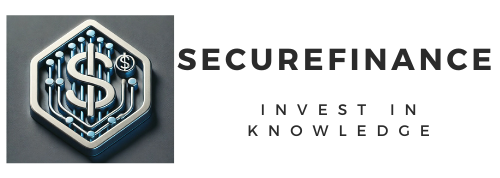
In today’s fast-paced world, many people dream of earning money without constant effort. Passive income offers a way to achieve that. If you have $1,000 to invest, you can start building streams of income that work for you over time. This guide will show you practical steps to begin passive income investing with a modest amount. You’ll learn about various options, from traditional investments to online business models. By the end, you’ll have the knowledge to make informed choices and grow your wealth steadily.
What is Passive Income Investing?
Passive income investing involves putting your money into assets or ventures that generate earnings with minimal ongoing work. Unlike active income from a job, passive sources can provide returns while you sleep. Common examples include dividends from stocks, interest from savings, or royalties from digital products.
Starting with $1,000 is accessible for beginners. You don’t need a fortune to enter this space. Many platforms allow small investments. For instance, you can buy fractional shares of stocks or fund a peer-to-peer lending account. The key is choosing options that match your risk tolerance and goals.
According to experts, diversifying your investments helps reduce risks. Learn more about passive income ideas to build a strong foundation. This approach can lead to financial freedom over time.
Why Start with $1,000?
Beginning passive income investing with $1,000 is smart for several reasons. First, it’s a low barrier to entry. You can test the waters without risking too much. Second, compound interest works in your favor. Even small amounts grow significantly over years.
Many successful investors started small. With $1,000, you can explore multiple avenues. This builds experience and confidence. Plus, current economic conditions in 2025 offer opportunities like high-yield accounts with rates above 4%. Check out passive income strategies for up-to-date insights.
Remember, consistency matters. Reinvest earnings to accelerate growth. This mindset turns $1,000 into a foundation for larger passive income streams.
Top Options for Passive Income Investing with $1,000
There are several ways to invest $1,000 for passive income. We’ll cover traditional and digital methods. Each has pros and cons. Choose based on your interests and risk level.
Invest in Dividend Stocks and ETFs
Dividend stocks pay regular payouts from company profits. With $1,000, you can buy shares in established firms. Platforms like Robinhood or Vanguard allow fractional investing. Aim for companies with a history of steady dividends, such as those in utilities or consumer goods.
Exchange-traded funds (ETFs) offer diversification. For example, a dividend-focused ETF like SCHD tracks high-yield stocks. Expect annual returns of 3-5% from dividends alone. Over time, stock appreciation adds more value.
To start, open a brokerage account. Research via passive income investing tips. This method is relatively hands-off after initial setup.
Peer-to-Peer Lending
Peer-to-peer (P2P) lending connects lenders with borrowers online. Platforms like LendingClub or Prosper let you fund loans with as little as $25 per note. With $1,000, diversify across many loans to minimize defaults.
Returns can range from 5-10% annually. Interest payments provide steady passive income. However, there’s risk if borrowers default. Start by reviewing borrower profiles and credit scores.
This option suits those comfortable with moderate risk. It’s a way to earn more than traditional savings without stock market volatility.
High-Yield Savings Accounts and CDs
For low-risk passive income investing, consider high-yield savings accounts. In 2025, rates hover around 4-5% APY. Banks like Ally or Capital One offer these with no minimums beyond your $1,000.
Certificates of Deposit (CDs) lock in rates for fixed terms. A 1-year CD might yield 4.5%. Your money earns interest passively. Withdrawals may incur penalties, so plan accordingly.
This is ideal for beginners seeking stability. Link to our guide on best low-risk investments for more details.
Start an Affiliate Marketing Business
Affiliate marketing involves promoting products and earning commissions. With $1,000, invest in a website domain, hosting, and tools. Platforms like WordPress cost under $100 yearly. Use the rest for content creation or ads.
Join networks like Amazon Associates or ClickBank. Create content around niches like finance or health. Once set up, traffic generates passive commissions. It may take months to see results, but it’s scalable.
This blends online business with investing. Your initial capital builds an asset that earns over time.
Launch a Dropshipping Business
A dropshipping business sells products without holding inventory. Suppliers ship directly to customers. With $1,000, set up a Shopify store ($29/month) and fund marketing.
Choose trending products via tools like Oberlo. Promote on social media or Google Ads. Profits come from markups, potentially 20-50% per sale. Automation tools make it passive after launch.
It’s a hands-on start but becomes passive with systems in place. Explore our post on online business setup guide for tips.
Affiliate vs Dropshipping: Which is Better for Passive Income?
When comparing affiliate vs dropshipping, both offer passive income potential with $1,000. Affiliate marketing requires less upfront risk. You don’t handle products or shipping. Earnings depend on traffic and conversions.
Dropshipping involves more logistics but higher profit margins. You control pricing and branding. However, customer service can add work. Affiliate is more passive long-term, as content evergreen generates ongoing income.
Choose based on skills. If you like writing, go affiliate. For sales, try dropshipping. Both can complement traditional investing for diversified passive income.
Step-by-Step Guide to Get Started
Ready to begin passive income investing with $1,000? Follow these steps.
First, assess your finances. Ensure you have an emergency fund. Debt with high interest should come before investing.
Second, set goals. Decide if you want steady income or growth. This guides your choices.
Third, research options. Use resources like the ones linked here. Open necessary accounts, such as brokerage or e-commerce platforms.
Fourth, allocate your $1,000. Diversify: $400 in stocks, $300 in P2P, $300 in an online business.
Fifth, monitor progress. Use apps to track returns. Adjust as needed.
Sixth, reinvest earnings. This compounds your passive income over time.
Patience is key. Results build gradually.
Risks and How to Mitigate Them
No investment is risk-free. Market fluctuations can affect stocks. P2P loans may default. Online business ventures like affiliate marketing or dropshipping business face competition.
To mitigate, diversify. Don’t put all $1,000 in one place. Educate yourself continuously. Start small and learn from mistakes.
Taxes apply to earnings. Consult a professional for advice. In 2025, rules may change, so stay informed.
By managing risks, you protect your investment and maximize passive income.
You Can Also Read: How to Invest in Stocks for Beginners with High Returns
Conclusion
Starting passive income investing with $1,000 is achievable and rewarding. From dividend stocks to affiliate marketing, options abound. Compare affiliate vs dropshipping if leaning toward online business. Follow the steps, manage risks, and watch your money grow.
Remember, success comes from action and persistence. Begin today, and build toward financial independence. For more ideas, explore related resources.
